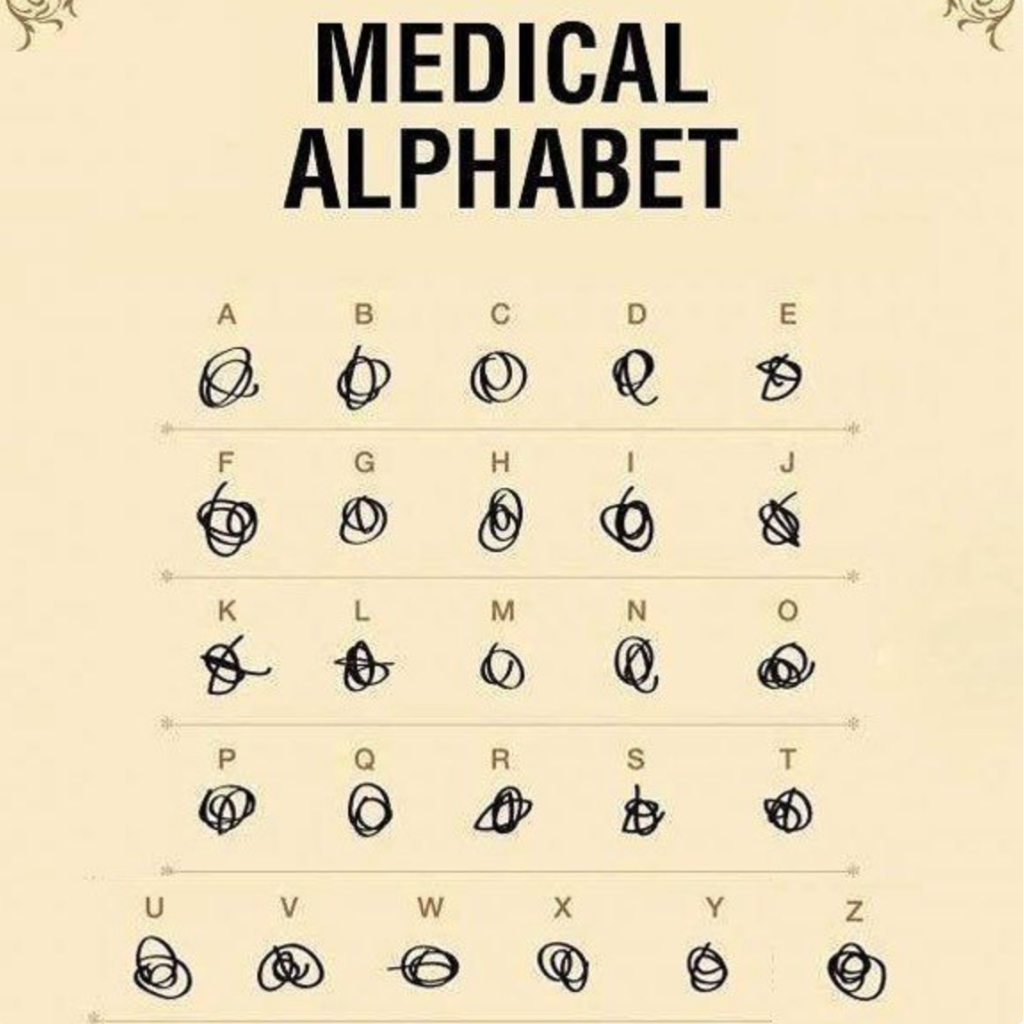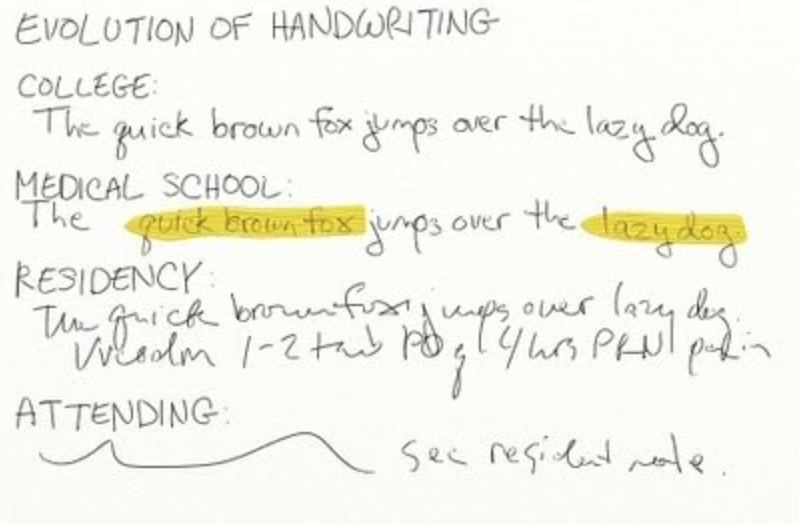THE MEDICAL PERILS OF BAD HANDWRITING

BY MORENIKE ISOLA – If you aspire to become a healthcare professional, you presumably have heard the common stereotype of physicians having poor handwriting. While this has been viewed as an amusing characteristic of some physicians, its negative effect on the healthcare field is by no means amusing. Physicians’ poor handwriting has had a serious impact on the healthcare field, most significantly in the lives of patients due to the illegible notes that cause complications.Illegible notes listing a specific medication can be misread by a pharmacist, which leads to the administration of the wrong drug that can exacerbate a patient’s condition or potentially kill a patient. According to the Institute of Medicine, physician’s illegible notes lead to approximately 7,000 deaths annually. This shocking statistic emphasizes how dangerous bad handwriting can be in the healthcare field.
 In one situation, a physician prescribed 10 milligrams of Metadate twice a day for a 7 year old boy. This is a stimulant medication used to treat Attention Deficit/ Hyperactivity Disorder (ADHD). However, the pharmacist inadvertently misread this handwritten prescription as “methadone”, a synthetic analgesic used to treat individuals with heroin addiction. The child became lethargic and vomited after taking 1 dose of the methadone. He was promptly sent to a pediatric intensive care unit where he was fortunately able to recover. This is a prime example of how poorly handwritten prescriptions can potentially lead to life-threatening events. Furthermore, there are plausible explanations for why some physicians have poor handwriting.
In one situation, a physician prescribed 10 milligrams of Metadate twice a day for a 7 year old boy. This is a stimulant medication used to treat Attention Deficit/ Hyperactivity Disorder (ADHD). However, the pharmacist inadvertently misread this handwritten prescription as “methadone”, a synthetic analgesic used to treat individuals with heroin addiction. The child became lethargic and vomited after taking 1 dose of the methadone. He was promptly sent to a pediatric intensive care unit where he was fortunately able to recover. This is a prime example of how poorly handwritten prescriptions can potentially lead to life-threatening events. Furthermore, there are plausible explanations for why some physicians have poor handwriting.
A majority of the time, physicians are rushing to attend to their patients’ needs which possibly affects the way they write. Physicians usually spend around 15-30 minutes per patient, suggesting that they must move quickly. This hectic environment may lead to sloppy handwriting since the physician is trying to record substantial notes within a limited time period. If a physician was allotted more time with each patient, it would provide a greater opportunity for the physician to write concise and legible notes.
 In addition, physicians typically write notes that are decipherable primarily to themselves, and they are not mindful of how others may interpret it. A primary care physician from Mercy Medical Center claims that other physicians may have a difficult time interpreting her handwriting, while she can usually read her own. Another physician from Aster Medical Centre, argues that physicians tend to focus more on the patient’s diagnosis and medication rather than on how well the prescription is written. This suggests that physicians are mentally occupied with numerous thoughts concerning a patient’s condition which may not be expressed thoroughly though pen and paper. All of these factors are potential contributions to poor handwriting which in turn contributes to medical errors.
In addition, physicians typically write notes that are decipherable primarily to themselves, and they are not mindful of how others may interpret it. A primary care physician from Mercy Medical Center claims that other physicians may have a difficult time interpreting her handwriting, while she can usually read her own. Another physician from Aster Medical Centre, argues that physicians tend to focus more on the patient’s diagnosis and medication rather than on how well the prescription is written. This suggests that physicians are mentally occupied with numerous thoughts concerning a patient’s condition which may not be expressed thoroughly though pen and paper. All of these factors are potential contributions to poor handwriting which in turn contributes to medical errors.
Fortunately, the coalition of technology with healthcare is gradually resolving this issue. In 2014, a federal mandate was issued which stated that all healthcare providers must adopt the use of electronic medical records or else they will lose Medicare funding. With this transition of paper documents to electronic records, a patient’s medical information is clearly recorded and will result in less misinterpretation. E-prescribing, a software used to electronically send accurate prescriptions directly to pharmacies, has also been adopted by many physicians, leading to a decrease in the number of medical errors caused by poor handwriting.
Despite the issue of illegible notes, physicians are essential towards the health and prosperity of the US population. It is also apparent that not every physician has bad handwriting, but the ones who do are creating room for medical errors that are preventable. It is imperative that prescriptions are thoroughly and accurately recorded to ensure patients are receiving the best possible treatment. If a physician chooses to use handwritten prescriptions rather than electronic, they must ensure it is legible because the quality of their writing can determine the difference between life and death.
